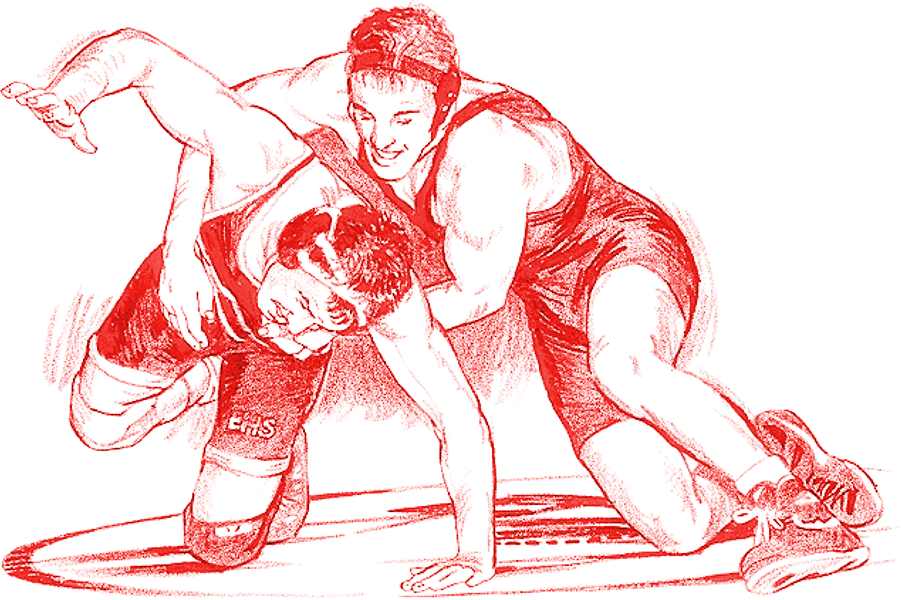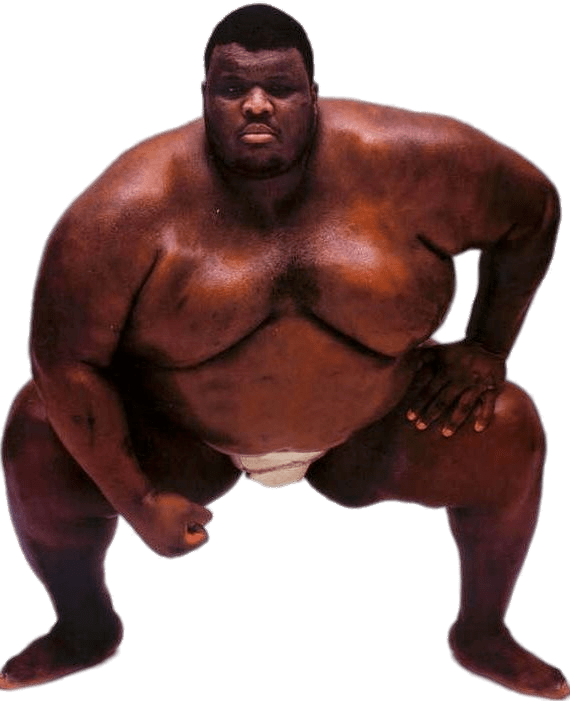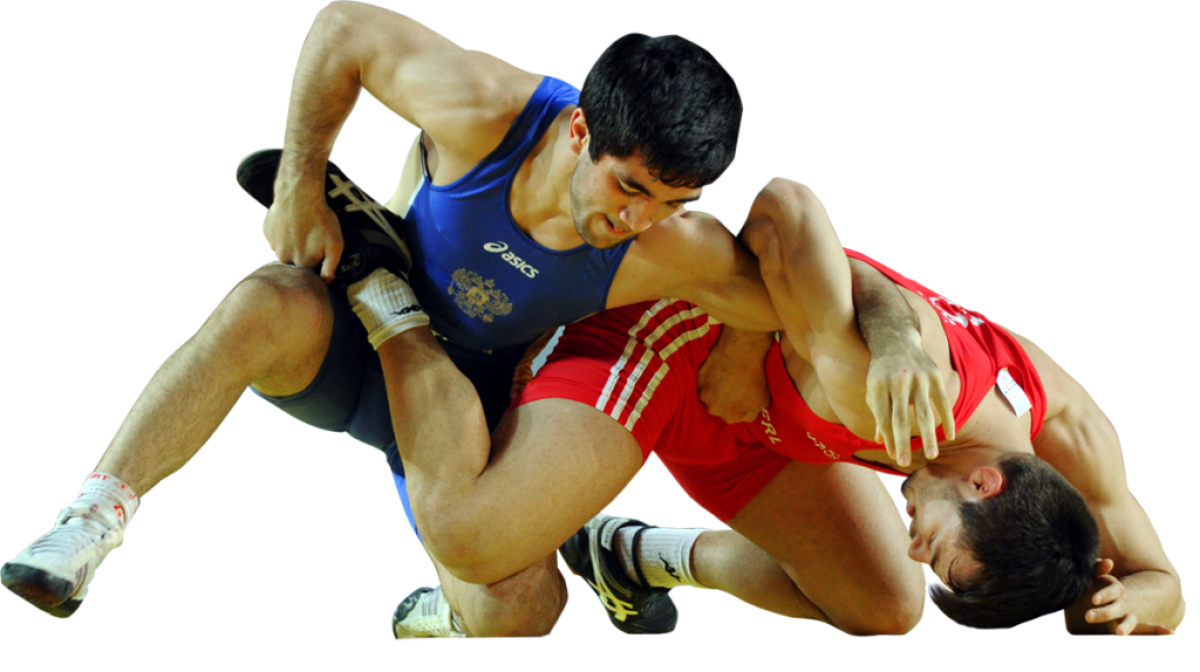Download top and best high-quality free Wrestler PNG Transparent Images backgrounds available in various sizes. To view the full PNG size resolution click on any of the below image thumbnail.
License Info: Creative Commons 4.0 BY-NC
Professional wrestling is a type of performance art in which wrestlers compete in choreographed fights with predetermined outcomes, usually between actors playing established character roles. Professional wrestling is not to be confused with amateur wrestling, which is a contact sport. The fights are based on classical and “catch” wrestling, with modern elements such as striking attacks, acrobatics, strength feats, fast-moving agility, and improvised weaponry. Melodrama is also used frequently in professional wrestling.
Like some of the genuine prizefighters they emulate, professional wrestling characters have big egos, flamboyant personalities (sometimes tied to a gimmick), and tumultuous interpersonal relationships. These identities, like the matches, are manufactured. The majority of the performances take place in a ring similar to that used in boxing. Many additional “backstage” sequences are captured in televised wrestling shows to augment the drama in the ring.
Professional wrestling in the United States and the United Kingdom originated as a true competitive sport based on Greco-Roman wrestling and subsequently the more popular catch wrestling in the late 19th and early 20th centuries. Wrestlers began choreographing parts of their matches in the early 1920s to make them less physically demanding, shorter in duration, and more entertaining. The wrestlers were able to perform more regularly and draw greater crowds as a result of this.
Authentic bouts were still staged in the 1930s, although they were far less common. This business concept was a huge success, and it was copied in other countries, especially in Mexico and Japan. Professional wrestlers used to have a strong foundation in amateur wrestling or catch wrestling, but this has steadily diminished as promoters have begun to recruit players from other sports. Wrestlers in the modern day do not need to have competed as amateurs to be successful in the sport. However, many professional wrestlers still believe that having a strong amateur experience is advantageous before pursuing a professional career.
Professional wrestling regulations do not have a regulating body, although a basic standard has emerged. Each offer is unique, although they are all similar enough to avoid misunderstanding most of the time. Any rule stated here is only a guideline, and it may or may not correspond exactly to the ruleset of any specific promotion.
These are not genuine “rules” in the sense that they would be regarded in similar articles on actual sports like freestyle wrestling, due to the staged nature of wrestling. Instead, for suspension of disbelief, the “rules” in this article are enacted and purportedly followed (known as kayfabe in the jargon of the business).
When a wrestler remains out of the ring for long enough for the referee to count to ten (twenty in some companies) and therefore disqualified, it is called a countout (alternatively “count-out” or “count out”). When a wrestler in the ring departs the ring, the count is broken and reset. Some wrestlers took advantage of this by “milking” the count by slipping into the ring and then sliding out again. It is sufficient to reset the count because he was technically within the ring for a single second before departing again. Commentators typically refer to this as “breaking the count.” This is a common strategy used by heels to buy themselves more time to regain their breath or to frustrate their babyface opponents.
The referee will start a count if all of the active wrestlers in a contest are down within the ring simultaneously (usually ten seconds, twenty in Japan). The match is declared a draw if no one gets to their feet after the count. While in a Last Man Standing match, the referee would count when one or more wrestlers are down, and one wrestler standing up before the 10-count does not stop the count for another wrestler who is still down, in a Last Man Standing match, this form of a countout is the only way the match can end, so the referee would count when one or more wrestlers are down. One wrestler standing up before the 10-count does not stop the count for another wrestler who is still down.
Championships cannot change hands through countout in certain promotions (and most major modern ones) until the on-screen authority announces it for at least one match. In contrast, championships can change hands via countout in others. When facing challenging opponents, especially when defending titles, the Tar Heels are known to take advantage of this and purposely get counted out.
Download Wrestler PNG images transparent gallery.
- WWE Wrestler Background PNG
Resolution: 820 × 840
Size: 351 KB
Image Format: .png
Download
- WWE Wrestler PNG
Resolution: 583 × 1457
Size: 796 KB
Image Format: .png
Download
- Wrestler
Resolution: 663 × 1024
Size: 614 KB
Image Format: .png
Download
- Wrestler PNG
Resolution: 554 × 751
Size: 595 KB
Image Format: .png
Download
- WWE Wrestler PNG Pic
Resolution: 1546 × 1535
Size: 1908 KB
Image Format: .png
Download
- WWE Wrestler PNG File
Resolution: 1024 × 964
Size: 1127 KB
Image Format: .png
Download
- WWE Wrestler PNG Image
Resolution: 1127 × 1600
Size: 955 KB
Image Format: .png
Download
- WWE Wrestler PNG Photo
Resolution: 583 × 1867
Size: 642 KB
Image Format: .png
Download
- WWE Wrestler PNG Cutout
Resolution: 683 × 1024
Size: 658 KB
Image Format: .png
Download
- WWE Wrestler PNG Images
Resolution: 542 × 1080
Size: 730 KB
Image Format: .png
Download
- Wrestler PNG Pic
Resolution: 1024 × 613
Size: 30 KB
Image Format: .png
Download
- Wrestler PNG File
Resolution: 2500 × 2092
Size: 94 KB
Image Format: .png
Download
- Wrestler PNG Image
Resolution: 850 × 459
Size: 13 KB
Image Format: .png
Download
- Wrestler PNG Photo
Resolution: 901 × 600
Size: 192 KB
Image Format: .png
Download
- Wrestler PNG Cutout
Resolution: 570 × 701
Size: 134 KB
Image Format: .png
Download
- Wrestler PNG Images
Resolution: 500 × 500
Size: 233 KB
Image Format: .png
Download
- Wrestler PNG Photos
Resolution: 650 × 1043
Size: 981 KB
Image Format: .png
Download
- Wrestler Transparent
Resolution: 512 × 512
Size: 16 KB
Image Format: .png
Download
- WWE Wrestler Transparent
Resolution: 1000 × 707
Size: 615 KB
Image Format: .png
Download
- Wrestler PNG Clipart
Resolution: 990 × 789
Size: 138 KB
Image Format: .png
Download
- WWE Wrestler PNG Clipart
Resolution: 600 × 1366
Size: 595 KB
Image Format: .png
Download
- WWE Wrestler PNG HD Image
Resolution: 500 × 500
Size: 214 KB
Image Format: .png
Download
- Wrestler PNG Picture
Resolution: 500 × 500
Size: 299 KB
Image Format: .png
Download
- Wrestler PNG HD Image
Resolution: 1200 × 672
Size: 716 KB
Image Format: .png
Download
- Wrestler PNG Image HD
Resolution: 512 × 512
Size: 14 KB
Image Format: .png
Download
- Wrestler No Background
Resolution: 512 × 512
Size: 76 KB
Image Format: .png
Download
- Wrestler PNG Images HD
Resolution: 1000 × 1000
Size: 436 KB
Image Format: .png
Download
- Wrestler PNG Free Image
Resolution: 512 × 512
Size: 59 KB
Image Format: .png
Download
- Wrestler PNG Image File
Resolution: 512 × 512
Size: 52 KB
Image Format: .png
Download
- WWE Wrestler
Resolution: 567 × 902
Size: 608 KB
Image Format: .png
Download
- WWE Wrestler PNG Photos
Resolution: 626 × 771
Size: 421 KB
Image Format: .png
Download
- WWE Wrestler PNG Picture
Resolution: 791 × 1010
Size: 844 KB
Image Format: .png
Download
- WWE Wrestler PNG Image HD
Resolution: 672 × 1348
Size: 682 KB
Image Format: .png
Download
- WWE Wrestler No Background
Resolution: 841 × 1248
Size: 865 KB
Image Format: .png
Download
- WWE Wrestler PNG Images HD
Resolution: 512 × 512
Size: 134 KB
Image Format: .png
Download
- WWE Wrestler PNG Free Image
Resolution: 1024 × 1073
Size: 1720 KB
Image Format: .png
Download
- WWE Wrestler PNG Image File
Resolution: 901 × 825
Size: 1076 KB
Image Format: .png
Download







































